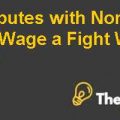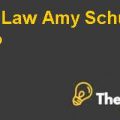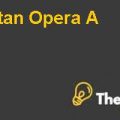
New York Times Co.
Question 1
Analyze the ownership construction that allows the family to control the New York Times. Beyond the desire to control NYT, which potential problems have led the family chief(s) to implement this ownership structure?
It has been a norm in the United States newspaper industry that the majority of the newspaper companies have been owned majorly by families. Around 1,785 newspapers in the era of 1950’s were family owned and this represented about 70% of the total of the newspaper industry. The newspaper businesses were usually held by families through generation to generation and at the New York Times, this successive generation is Ochs-Sulzbergers.
The majority of the multi city newspaper chains were owned by the families throughout the 1880s. Most of the companies in the United States that were family owned were more interested to preserve the family control from generation to generation when the firm went for a major restructuring program or it wanted to go public. Therefore, in order to achieve this the normal and the basically approach taken by the majority of the newspaper companies in United States was to offer the minority of the issues shares to the public and take all the majority of the issues shares, thus maintaining family control.
However, the approach taken by the owners of New York Times Company was slightly different and not usual in order to preserve the family control. When New York Times went public, it became listed on the American Stock Exchange with a dual class share structure. Under the dual class share structure the two classes of the shares were different in terms of the voting rights.
Class B shares offered the voting rights whereas, the class A shares did not offer any voting rights. Based upon this structure, Ochs and Sulzberger had formulated the way through which the control would be maintained by the family from generation to generation by owning the majority of the class B shares. Later on after the death of Ochs, four more trusts were opened and an agreement with the shareholders had been signed under which the class B shares would not be sold to the outsiders without first converting them to class A shares.
Upon the death of Iphigene Sulzberger, the total class B’s shares representing 83.7% were distributed among the four 1986 trusts. Afterwards these four trusts were consolidated into single family trusts. This was the way through which the ownership construction was formed and family control was retained for New York Times Company.
Along with this, there were a number of problems which had forced the company to maintain he control of the business. There were a number of economic reasons for the owners for controlling the companies in the newspaper industry. For instance, the printing technology in this industry was labor intensive and this made the family owned operations more efficient as compared to the larger newspaper chains in the industry. Other reason provided by the family owners for preserving the family control was that the journalist integrity which is required for the newspaper publishing and printing demanded more for a family control behind the company.
These were the main reasons due to which the family behind New York Times had constructed family control for retaining control of the organization. As described previously the normal way to retain the control was to issue minority of the shares to public however, this was not easy at all and there were chances that the younger heirs might sell the shares to the outsiders for potential profits. Therefore, in order to cope with this issue, the dual structure ownership was formulated and control was later maintained through the trusts...........................













